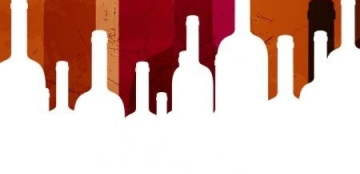Temperature
Most white wines should be served chilled to about 50°F to 60°F, while Champagne and sparkling wines should be served a little cooler at 40°F to 50°F. Most red wines should be served at about 60°F to 65°F, while Beaujolais should be served cooler at about 50°F to 60°F. (The typical wine cellar temperature is 55°F, while a refrigerator is normally about 37°F.) White wines may be chilled in the refrigerator for about two hours before serving, while reds will benefit from about one-half hour of chilling. Wines that are served too cold will lack aroma.
Rather than refrigerating ahead of time to cool the wines, an ice bucket may be used. The bucket should be filled with half ice, and half cold water, and should be deep enough to allow submersion of the bottle to the neck. The time required to chill red wines in an ice bucket is about 5 minutes, Beaujolais 15 minutes, 15 to 25 minutes for whites, and 30 minutes for Champagne and sparkling wines.
Decanting
Decanting is necessary only for an older red wine that has a natural build-up of sediment in the bottle from years of aging. The wine should be poured carefully, in one uninterrupted movement, into a decanter. Decanting also allows the wine to come into more contact with the air, allowing the wine to “breathe,” and prevents the sediment from being poured into the wine glass. About 30 minutes is the time required to properly decant the wine. White wines do not require such treatment. Red Burgundy and Pinot Noir should not be decanted. They should be drunk soon after opening the bottle as the flavors begin to fade when exposed to air.
Stemware
Red wineglasses are typically balloon-shaped, while white wineglasses are tulip-shaped. Champagne and sparkling wines should be served in a fluted glass. The typical size of a wine glass is about 12 ounces, but you should pour no more than half the glass full, and ideally only one quarter full. Many high quality specialty wineglasses are much larger than 12 ounces, allowing for a smaller percentage of fill. The use of high quality stemware will enhance the flavor of wine, many of which feature a thin rim.
Make certain that your wineglasses are clean – free from soap residue and musty odors from storage in a cabinet, as this will adversely effect the wine. If possible, rinse the glasses with filtered water before using.








Good selection, fair pricing, and accurate delivery times.